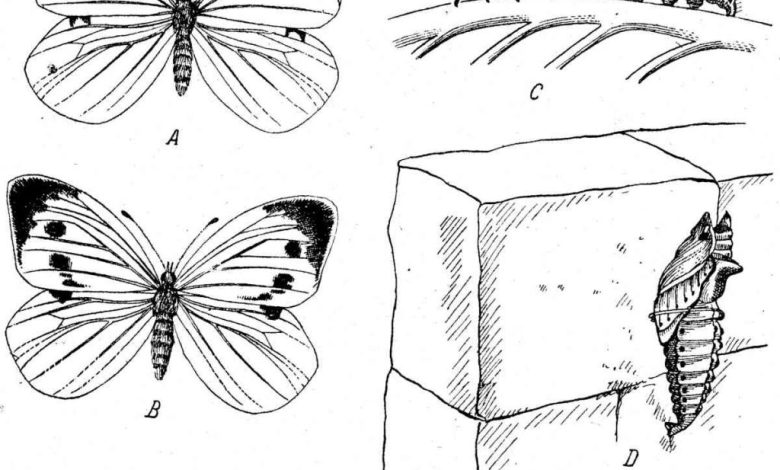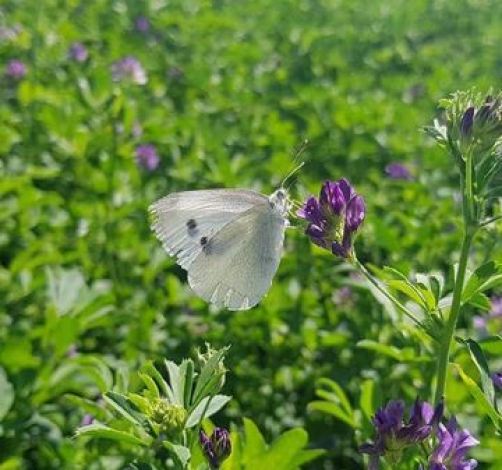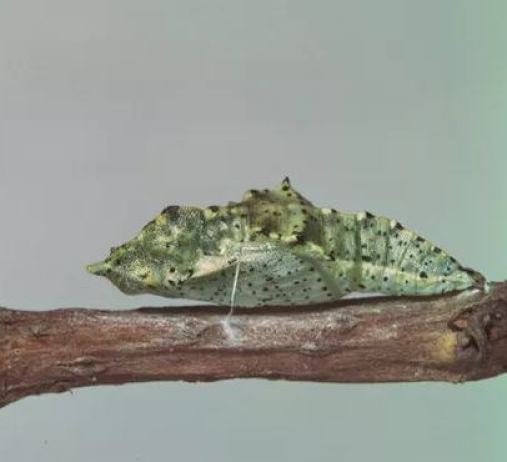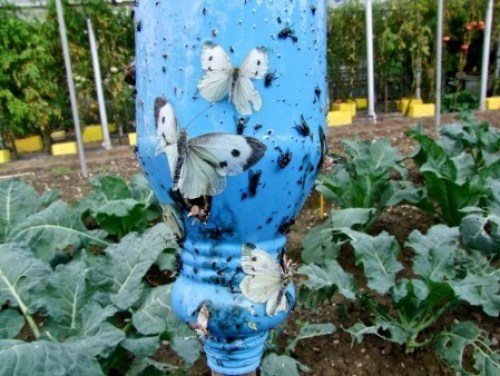What is the Cabbage Butterfly: How to eliminate it easily

Good morning to all Agrohuerters, today we are going to talk about a very voracious pest, the cabbage butterfly, cabbage white butterfly or cabbage worm depending on what phase you find it in the garden.

What is the cabbage butterfly or cabbage caterpillar?
The cabbage butterfly , Pieris brassicae, is a Lepidoptera with a wingspan of about 5 or 6 cm, white with black spots, which usually feeds and lays its eggs on species of the cruciferous family (Brassicaceae), especially in the cabbages: cabbage, cauliflower, Brussels sprouts and possibly even ornamental cabbages …
The eggs of the cabbage butterfly, once they hatch in 8 or 10 days, give rise to small grayish larvae with a great appetite, which will begin to pierce the leaves of your cabbage with their chewing mouthparts, becoming a large problem since in the cabbages the edible, harvestable part is the same that these larvae devour. Once they pass their larval stage, they will pupate to become butterflies.

How to control the cabbage butterfly
If you see this butterfly fluttering around your orchard or garden, you don’t really need to have cabbages because they usually spawn on other plants, you have to act as soon as possible so as not to lose your harvest, I leave you some tips to control the presence of this butterfly of the cabbage in your gardens and thus prevent it from laying eggs:
Look at which plants the cabbage butterfly perches on or if any leaf has these characteristic holes. Once these leaves are located, turn them over and you will surely find some eggs. At that moment crush them without fear, preferably wearing gloves, to prevent the larvae from devouring your cabbage.
You can also equip yourself with a butterfly net and eliminate the butterfly from the cabbage wherever you see it, it can be a bit tedious but if you have children or small relatives you can turn it into a very fun afternoon.
1. Cabbage butterfly traps
This way of controlling the cabbage butterfly comes from the blog: The family garden and is based on combining the attraction of the chromatic traps with an adhesive. Simply use a yellow or blue bottle, colors that attract butterflies, and cover them with glue. Place several traps of this style around the garden to ensure that as many cabbage butterflies as possible are retained.

2. Mesh tunnels over crops
These mesh tunnels will not only insulate your crops from the cold, but they will also prevent the butterfly from entering to lay its eggs on them. It is advisable to create these structures only on crops that do not require biotic pollination, or by insects or animals, since they will not enter this covered area.
3. Ecological insecticides against the cabbage butterfly
There are many ecological remedies against pests, but the most effective in this case are the ecological insecticides that will kill the cabbage butterfly in its larval stage and will not affect humans or the health of your plants.
The most effective insecticide is Bacillus thuriengiensis, which can be applied to leaves as a powder or spray. Once the cabbage butterfly larva ingests these leaves treated with Bacillus, it dies after a few days by sporulating this bacterium in its stomach, removing the appetite of these larvae and finally causing their death by starvation. This method is very effective against other voracious and very harmful pests such as Tuta Absoluta.
Another ecological insecticide that you can use is neem oil, somewhat less effective than Bacillus but equally valid. As I have said before, these methods are only effective if the larva ingests the leaves treated with Bacillus, so try to apply them to the most infested species that have individuals on the leaves, not inside the fruits or stems.
References
- Khaling E, Papazian S, Poelman E, Holopainen J, Albrectsen B, Blande J (2015). Ozone affects growth and development of Pieris brassicae on the wild host plant Brassica nigra. Environmental Pollution, 199,119-129.
- Hasan, F., Ansari, M. (2011). Effects of different brassicaceous host plants on the fitness of Pieris brassicae (L.), Crop Protection, 30(7), 854-862.
- Hasan, F., Ansari, M. (2011). Toxic effects of neem-based insecticides on Pieris brassicae (Linn.). Crop Protection. 30(4), 502-507
I hope that with these tips the cabbage butterfly does not affect your crops. The remedies that I have mentioned are equally valid for other caterpillars or worms that may affect our garden. And, as always, if you want to leave us a comment about your experience with these or other harmful little worms, you are welcome, surely many are interested.
All the best !

![Photo of Plant Artichokes: The Most Efficient Way in [12 Steps]](https://www.complete-gardening.com/wp-content/uploads/2022/08/plant-artichokes-the-most-efficient-way-in-12-steps-390x220.png)
![Photo of Care of Geraniums: [Earth, Strengthening, Humidity and Pruning]](https://www.complete-gardening.com/wp-content/uploads/2022/08/care-of-geraniums-earth-strengthening-humidity-and-pruning-390x220.jpg)
![Photo of Prune Kumquats: [Importance, Season, Tools, Considerations and Steps]](https://www.complete-gardening.com/wp-content/uploads/2022/08/prune-kumquats-importance-season-tools-considerations-and-steps-390x220.jpg)
![Photo of Coffee Grounds in the Garden: [Application, Benefits, Compost and pH]](https://www.complete-gardening.com/wp-content/uploads/2022/08/coffee-grounds-in-the-garden-application-benefits-compost-and-ph-390x220.png)